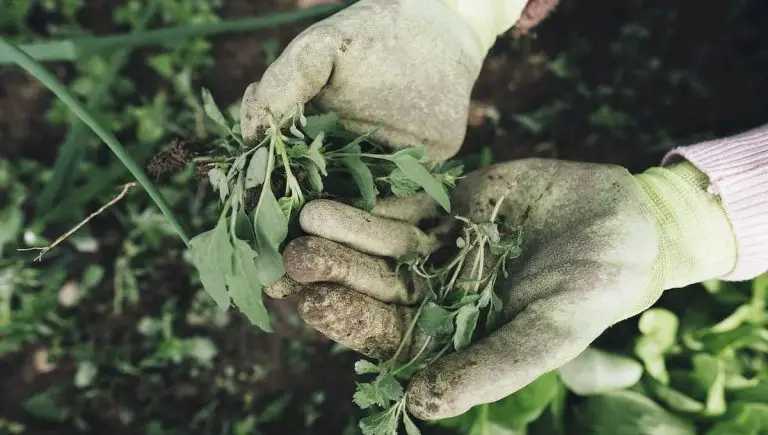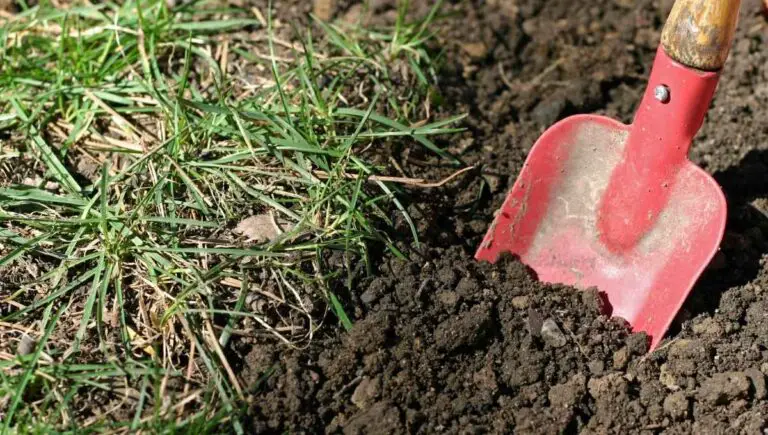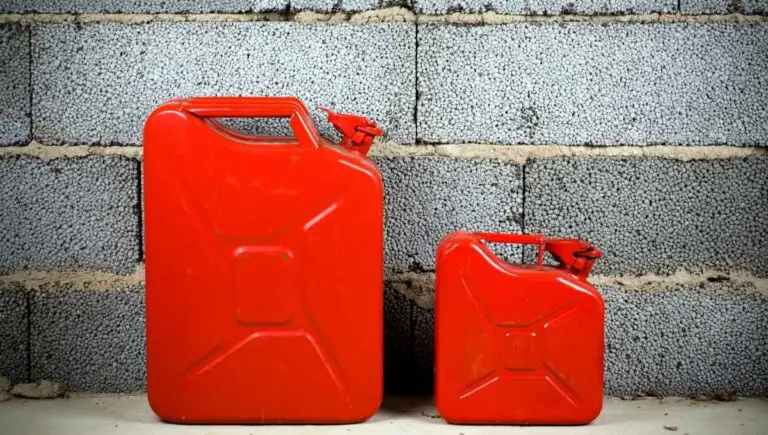How To Get Rid of Poison Ivy Without Killing Other Plants

You don’t want poison ivy growing in your backyard, especially if you have children who play outside often. In this blog post, we’re going to cover some effective approaches that can show you how to get rid of poison ivy, without killing other plants.
The most effective method used in getting rid of poison ivy without killing other plants is digging up the poison ivy by hand. You’ll need to dig approximately 3 inches deep or until you hit the roots. Make sure you carefully dispose of all parts of the plant when doing this (including the roots), so that the plant cannot grow back.
Before you start frantically pulling up poison ivy by hand, there are some precautions you should take to protect yourself as well as other remedies you should consider. In this blog post, we’re going to share with you various popular methods of removing poison ivy, safety precautions you need to take, best practices for handling poison ivy, and more.
Here’s a Quick Pro Tip!
The most effective type of vinegar to use when getting rid of poison ivy is an industrial type of vinegar called Horticultural Vinegar. This vinegar has higher pH levels and works very effectively to get rid of poison ivy fast.
If you’re looking to quickly tackle your poison ivy problem, check out the best Horticultural Vinegar on Amazon!
Get To Know The Plant: Why Is Poison Ivy Dangerous To Humans?
Apart from being an invasive species that grows on top of low-growing plants (such as ferns), poison ivy or Toxicodendron as it’s officially called, is dangerous for humans as exposure results in serious rashes that spread.
While poison ivy is beneficial and a source of food for wildlife, the resin that the plant releases harms human skin, and the unfortunate news is that every part of the plant is poisonous; the roots, leaves, vines, flower buds, and the berries.
The resin, which is called urushiol, is an oily substance that sticks to any surface, and can even be carried inside in your cat’s fur. You don’t need to brush up against a poison ivy hedge directly to experience a rash as you can suffer the effects by indirect exposure. For example, if you stroke your ivy-coated feline, the urushiol will cling to your skin or clothing.
While challenging to get rid of, it is possible to remove poison ivy. However, the first step in achieving a poison-ivy-free garden is to identify the plant positively. But what does poison ivy look like?
The appearance of poison ivy plants are similar to other ornamental plants; it’s often misidentified or overlooked. However, if you have a keen eye, you will spot the plant growing in a three-leaf cluster near to the ground, or climbing trees or walls.
The texture and appearance of the leaves, which varies, are either shiny or dull, smooth-edged or pinched. The color of the leaves change by the season; in spring the leaves are spotted with reddish tints; varying shades of orange and yellow in the fall and winter, and green in the summer.
If you aren’t sure about the species growing in your garden and don’t want to dig up the wrong plant accidentally, you can always call poison ivy removal services to sort out the issue.
What Is The Difference Between Poison Ivy And Poison Oak?
Poison Ivy and oak are said to look identical and result in harmful side effects if you accidentally touch the plant.
The principal difference between the two are that poison oak grows as a low shrub, has leaves that aren’t so pointed, and are generally only found in the west and southeastern United States.
Whichever plant you brush up against, you should attend to the injury immediately before it worsens.
How Do I Get Rid Of Poison Ivy In My Yard
So how do you kill ivy without killing other plants? Depending on whether you want to eliminate the vines using chemicals or naturally, there are various methods, herbicides, and homemade poison ivy killers you can use to get the job done.
If you’re reading this, it’s likely that you’ve already had an infestation and you’re looking for efficient measures to remove the ivy and prevent it from growing back.
Unfortunately, poison ivy is a robust plant with a complex root system that tends to re-grow and can be impossible to get rid of permanently. This is because all parts of the plant must be eliminated from your yard, requiring manual labor, and even then you might miss offshoots in the process.
That said, you can improve upon uncontrollable growth in your yard, and see a reduction in growth in the future through regular maintenance.
How Do I Rid My Yard Of Poison Ivy Without Seeing Rapid Regrowth?
Earlier, we mentioned that there are a plethora of measures you can take, each that pose varying degrees of success.
What you use depends on two principal factors; whether you need fast-acting products to address your invasion quickly and your stance on using chemicals.
How Do You Kill Ivy Naturally?
Chemical sprays, such as roundup, kill poison ivy quickly. However, the chemicals don’t just destroy the targeted plant, but may also kill neighbouring plants if you aren’t direct enough when you spray.
Additionally, these sprays are toxic when ingested, harmful for the environment, possibly humans, and can impact the PH levels of the soil.
With a Homemade Vinegar Solution
The active ingredient in vinegar is acetic acid. Acetic acid is a desiccant that draws out the moisture from the leaves of unwanted plants.
Does apple cider vinegar kill poison ivy? All types of household vinegar are effective in eliminating this plant for the short term. However, if you want to minimise your carbon footprint, it’s better to purchase a non-GMO brand of vinegar, which you can find at health shops and nurseries.
You should also be aware of the fact that vinegar kills the plant from the top-down, which means the stem and leaves (the top parts of the plant) are destroyed, but the plant’s roots system remains firmly intact. What does this mean for your garden? That your poison ivy will be back again next year if you don’t stay on top of the issue.
Product Picks
- Try this all-natural, eco-friendly, vinegar-based herbicide from Natural Armor or this pet-and-kid-safe natural weed killer.
A Step-by-step Process In Removing Poison Ivy Manually
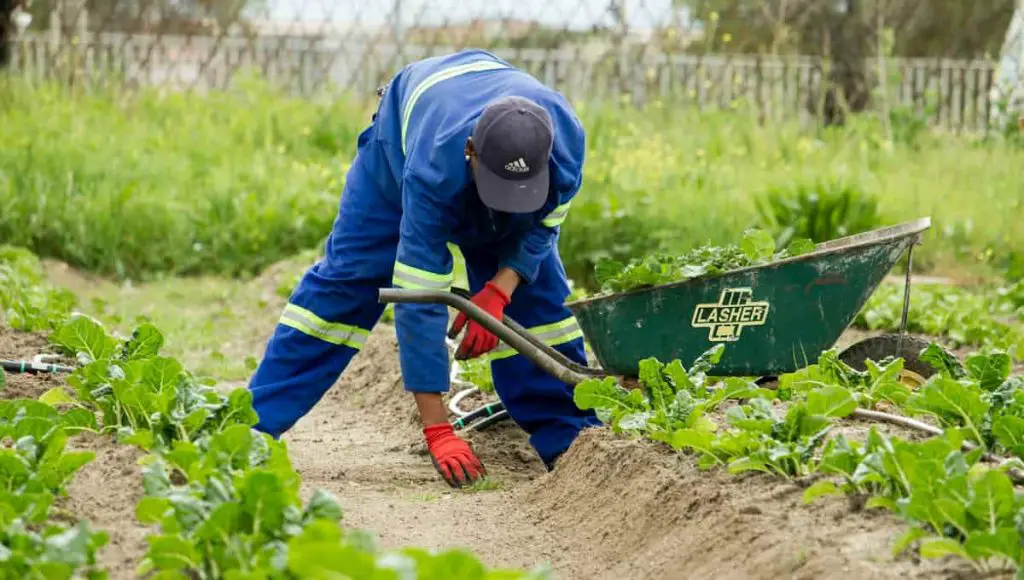
What will kill poison ivy without killing other plants? This is one of the most frequently asked questions on Google in regards to poison ivy.
This answer is somewhat complicated because the methods that can also be utilised run the risk of killing your prized roses.
However, one method that sees success is through digging. On top of keeping surrounding plants out of danger, you can stop poison ivy from growing back by shovelling dirt.
You need to get rid of all parts of the plant to ensure that it does not grow back, especially the roots in a series of steps.
Step One
Wear long pants, shirts, gloves, and heavy-duty gumboots as your skin should be completely covered to avoid contact.
Some websites have even recommended sticking your sleeves and ends of your pants down with duct tape as a precautionary measure against nasty rashes and inflammation.
Step Two
Assemble your tools. Sharp trowels and premium-grade shovels are both fine to use. You can also cut back the vines with shears.
Never use your hands to tear back these leaves, even if you wear gloves because this may disperse the plant’s resin in the air, affecting those who are in the vicinity.
Step Three
Assess the weather before you grab your equipment out of the tools shed. Digging just after it rains is ideal as the ground will be soft. Although that said, you should avoid performing this activity under rainy or windy conditions where the urushiol is carried in the air.
Step Four
Dig approximately three-inches deep or until you hit the roots.
Step Five
Once you’ve successfully removed the plant, bag it up for garbage collection, making sure to double-bag the plant to keep garbage collectors rash-and-scratch free.
Never burn the poison ivy as toxic fumes can be ingested, causing dangerous respiratory problems, not to mention inflammation.
Step Six
Wash your skin, clothes and tools once you’ve completed the task because the oily resin will remain on your clothes, and stays active for years.
Wash your clothes at least twice on the hottest setting possible on your washing machine to ensure that no residue remains.
Product Picks
- Purchase a heavy-duty, hand trowel tool and a round point blade shovel for easier digging.
Pouring Boiling Water Over the Plant
So is there a natural way to kill poison ivy then? One natural way of killing ivy involves pouring scalding water straight from the kettle over the plant.
Unfortunately, hot water can also kill other plants, so only use this method if the perpetrator is growing in the cracks of your driveway or in areas where it’s isolated from other species.
When Should I Spray for Poison Ivy?

Will Roundup Kill Poison Ivy?
Using commercial herbicides do pose a serious health and environmental risk, but what are the most suitable ones to use if other tactics have failed?
Roundup and Brush-B-Gone see widespread use in America. They comprise of glyphosate and triclopyr which penetrate the plant and kill it from the inside-out.
The answer to the question “what kills poison ivy the fastest”, is undoubtedly these and other related products.
If you do opt for this method, don’t try to remove the plant once you’ve had it sprayed. On top of putting yourself at risk for contracting poison ivy rashes and more, you’re also exposing yourself to a toxic chemical.
The main ingredient in Roundup is a herbicide and chemical called glyphosate. This herbicide has been purported to be a probable carcinogen by the World Health Organization.
In addition to these chemicals being toxic to other plants, the company Monsanto, the maker of the popular weed killer Roundup, was taken to court in 2018 and was ordered to pay $80 million dollars to a 70 year old man who developed cancer after using the product for 3 decades on his land.
Another disadvantage of using chemicals is that, like homemade remedies, only the top part of the plant is being destroyed and not the roots.
If you’re looking for a technique on how to get rid of poison ivy fast, chemicals will help. However, you will need to respray a couple of months down the line.
Product Picks
- Remove poison ivy and keep them away for four months using Bonide Poison Ivy and Brush Killer BK-32 Concentrate.
Will Bleach Kill Poison Ivy?
If you want to get rid of the nasty lurker inexpensively, you can use household products, such as bleach, to have it removed. Not only that, but bleach is said to soothe skin irritations caused by poison ivy.
Be careful not to apply the bleach directly onto the skin, as the product is a caustic chemical that is harsh on the skin if it’s not adequately diluted with water.
All you need to do is find an empty spray bottle, fill half of it with warm water, then add two cups of bleach, half a cup of hydrogen peroxide, and salt. You can then apply the solution generously over the area being treated. The ingredients found in bleach dry out the moisture of the leaves.
Tread with caution when using bleach as it’s a chemical method that can disrupt the ph of the soil, plus it can also kill other plants in the vicinity.
Can You Put Peroxide On Poison Ivy?
Peroxide is another chemical you can use as a remedy for poison ivy rashes, as all as a solution to wipe out invasions.
As mentioned above, combine peroxide with bleach, salt, and water to increase the potency of your homemade remedy.
Does Rubbing Alcohol Kill Poison Ivy?
Rubbing alcohol can be used to neutralise the oils secreted by the plants, which makes it more of a remedy to treat itches and scratches, than an effective solution in removing colonies of poison ivy.
While poison ivy tends to clear up on its own, the effects can be extremely unpleasant. We’ll later discuss the remedies you can utilise that will help to relieve some of your pain and discomfort.
How Should I Get Rid Of Poison Ivy In A Large Space?
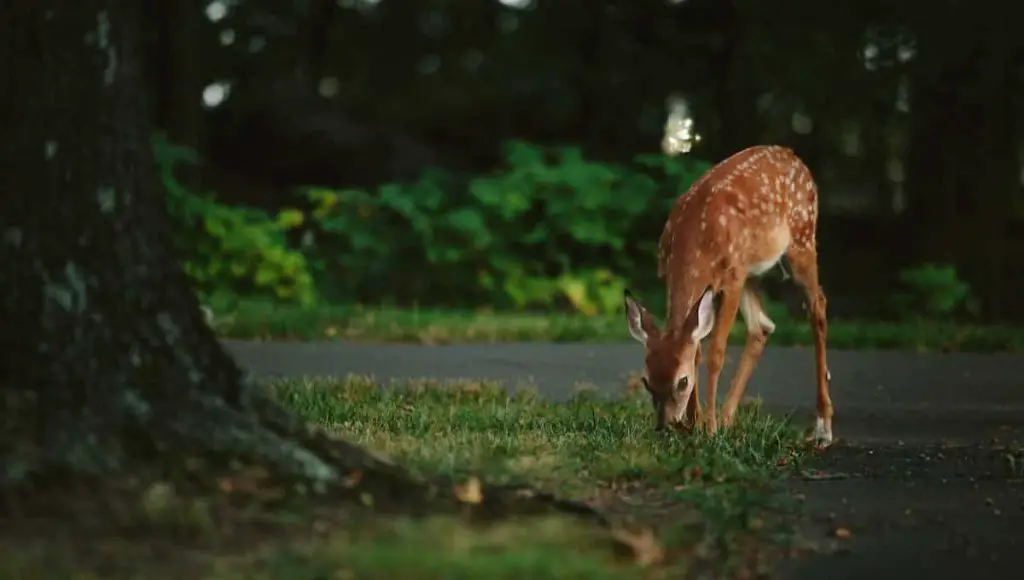
It may be surprising to note that while poison ivy is a plant disliked by humans, it has a role to play in the ecosystem, especially for wildlife.
Not only are there various animals that are immune to the plant resin that we dread, but the plant is also a good source of sustenance for them.
Animals such as whitetail deer, black bears, and raccoons can eat all parts of the plant, including the leaves, stem, and the fruit that it bears seasonally. Additionally, birds will eat the berries, which are produced by the plant during winter when food sources are in short supply.
We aren’t suggesting that you invite a family of black bears or raccoons into your yard. However, you can control the untamed poison ivy in your garden by setting farm animals or attracting white-tailed deers into your yard when food supplies are scarce for them during colder weather.
That way, you’re benefiting nature by providing food to animals, while keeping a severe issue in check.
How To Stop Poison Ivy From Growing Back?
If you’ve finally removed poison ivy from your yard, you’re probably wondering how you can completely eradicate the unwelcome yard invader without having to repeat the methods previously spoken about.
So how do you get rid of this wretched plant permanently? One means of potentially doing so is by planting grass seedlings as the grass will eventually take over the area.
Before you plant the seedlings, cover the area in mulch as this organic material will smother new poison ivy growth. Bearing in mind that seedlings take a couple of weeks to sprout, you will need to control the poison ivy from coming back through regular maintenance.
While this is a possible long-term solution, there is still a chance that sprouts of poison ivy can cause the plant to grow back despite your efforts in growing new grass.
Can You Mow Over Poison Ivy?
The opinions online are divided. While mowing the lawn can control your invasion, using a lawnmower will result in straggly bits potentially cutting the back of your legs, so be sure to wear protective clothing while performing this task.
Additionally, the urushiol of poison ivy will disperse and spread through the air, which is a health hazard not just for you, but your family and your neighbors.
When Should I Call In The Professionals?
You can use poison ivy removal services if your infestation has only started taking shape or has been around for years.
Professionals will know how to eliminate the issue without causing potential injury successfully. However, some people avoid calling in removal services for cost-effective DIY solutions. That said, some invasions might be harder to control for the amateur gardener.
So how much does it cost to have poison ivy removed professionally? The amount varies depending on the size of the area but could cost you anywhere from $300 to $700 dollars. Call your local poison ivy removal services for a quote.
What Are Some Remedies For Treating Poison Ivy Rashes And Itches?
The primary reason as to why people don’t want poison ivy growing in their yard is because brushing against it hurts. So what should you do if you’d had a nasty encounter with the plant while trying to get rid of it?
Treat your symptoms with the following home remedies:
- If you’ve made contact with poison ivy, the first thing you need to do is to remove the urushiol from your skin with warm water. Washing your skin with warm water might not necessarily prevent a rash from forming, but will make it less severe.
- Add baking soda in water and apply the mixture directly to the skin. If you’re struggling with full-body blisters or rashes, adding baking soda to a cool bath will help to reduce the discomfort that you’re experiencing.
- Prevention is better than a cure. If you know that you’ll be coming into contact with poison ivy shrubs, apply an over-the-counter cream to block the urushiol oil from penetrating your skin.
- We’ve mentioned that rubbing alcohol can help with rashes as it’s a solvent that helps to neutralize the urushiol of the plant.
Recap: How Do I Remove Poison Ivy Quickly and Effectively?
Poison Ivy is a diabolical plant that can seriously harm humans, so having clusters of it around your yard growing rampant is not a good idea. In this article, we’ve discussed the various ways you can get rid of an invasion.
- We’ve outlined that the first step in removing an invasion is by correctly identifying the plant. The plant is versatile with differently textured and colored leaves. We’ve also mentioned the part of the plant that makes it unpleasant, the urushiol, which is the sticky substance it secretes.
- The plant removal options available to you depend upon whether you want to use chemicals. Greener options include manual labour which involves digging the plant up, using homemade sprays using vinegar, or setting your urushiol-resistant farm animals on the vines.
- There are dangers to using chemicals. However, they are the fastest working products if you need to remove an infestation to protect your family. Roundup , which is a commonly used herbicide used in America, will kill poison ivy, though many consider it to be unsafe for humans and it may be a carcinogen.
Other cleaning products you can use that you may have in your house include bleach and peroxide – remember to use these cautiously as they can be abrasive on your skin.
- There’s no harm in calling in the professionals if DIY methods have failed or have resulted in injury. These services are affordable and will save you from a lifetime of inconvenience and discomfort.
- If you do happen to get into contact with poison ivy, there are homemade remedies and over-the-counter creams you can use to help you with pain relief and to prevent the spreading of potential rashes.

